-

Mar
29
FSIS extends time-limited trials until November

The United States Department of Agriculture’s (USDA’s) Food and Safety Inspection Service (FSIS) has extended the trial period for a study on the impact that line speeds have on workers at swine processing facilities, until November 30, 2023.
Read more
-

Mar
29
Industry groups all to modernize the Federal Milk Marketing Order system

The Board of Directors of the National Milk Producers Federation (NMPF) has endorsed a proposal that will modernize the Federal Milk Marketing Order (FMMO) system. Overseen by the United States Department of Agriculture (USDA), FMMOs establish provisions under which dairy processors buy fresh milk from dairy farmers who supply a marketing area, maintaining stable marketing relationships for all handlers and producers and organizing the complex process of marketing fresh milk.
Read more
-

Mar
29
New “Product of USA” rule put forth by Biden Administration

The United States Department of Agriculture (USDA) has proposed new requirements for the voluntary “Product of USA” claim. The proposed rule allows the voluntary “Product of USA” or “Made in the USA” label claim to be used on meat, poultry, and egg products only when they are derived from animals born, raised, slaughtered, and processed in the United States.
Read more
-

Mar
29
The Beagle Brigade Act of 2023 is introduced

Earlier this month, United States Senators Reverend Raphael Warnock (D-GA) and Joni Ernst (R-IA) introduced the Beagle Brigade Act of 2023. The bipartisan bill would provide permanent authorization for the National Detector Dog Training Center, located in Newnan, Georgia.
Read more
-

Mar
29
The Military Family Nutrition Access Act is introduced

United States Senators Tammy Duckworth (D-IL), and Lisa Murkowski (R-AK) have introduced The Military Family Nutrition Access Act, to support active-duty military families experiencing food insecurity. The bipartisan bill would address food insecurity by excluding Basic Allowance for Housing (BAH), from income calculations used to determine Supplemental Nutrition Assistance Program (SNAP) eligibility.
Read more
-

Mar
29
US requests talks with Mexico over GMO corn

The Office of the United States Trade Representative (USTR) has announced that it is requesting technical consultations with the Government of Mexico under the Sanitary and Phytosanitary Measures (SPS) Chapter of the United States–Mexico–Canada Agreement (USMCA). The request comes as the United States and Mexico are at battle regarding genetically modified corn.
Read more
-

Mar
29
USDA announces over 43 million dollars for meat and poultry research
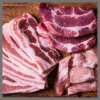
The United States Department of Agriculture (USDA) has announced over $43 million for meat and poultry processing research, innovation, and expansion. This funding comes as part of the American Rescue Plan and the USDA’s Agriculture and Food Research Initiative (AFRI).
Read more
-

Mar
29
USDA Secretary Tom Vilsack releases statement on FY2024

President Joe Biden has released the Fiscal Year 2024 (FY2024) budget. The President’s plan calls for increasing corporate taxes and income taxes on higher-income earners (over $400,000) to shave the growth of the national debt over the next decade.
Read more
-

Mar
23
Interpretive Summary: Effects of Aspergillus oryzae prebiotic on animal performance, nutrients digestibility, and feeding behavior of backgrounding beef heifers fed with either a sorghum silage- or a byproducts-based diet

This experiment evaluated the effects of the dietary inclusion or not of Aspergillus oryzae prebiotic (AOP; 2 g/d) in two contrasting diets: sorghum silage-based (SS) vs. byproducts-based (BP), on growth performance, nutrient digestibility, and feeding behavior of growing heifers.
Read more
-

Mar
23
Interpretive Summary: Feeding a Saccharomyces cerevisiae fermentation product before and during a feed restriction challenge on milk production, plasma biomarkers, and immune function in Holstein cows

Postbiotic fermentation products have the potential to improve health and support anti-inflammatory functions when fed to lactating dairy cows. Since dairy cows experience disruptions of the intestinal barrier function at various stages of their life, for example, the transition into lactation, we sought to investigate potential beneficial effects of feeding a Saccharomyces cerevisiae fermentation (NTK) before and during a period of feed restriction to challenge gut function.
Read more
-

Mar
23
Interpretive Summary: Feeding thermally processed spray-dried egg whites, singly or in combination with 15-acetyldeoxynivalenol or peroxidized soybean oil on growth performance, digestibility, intestinal morphology, and oxidative status in nursery pigs
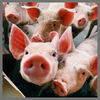
Swine can be exposed to a variety of nutritional stressors that can affect their well-being and productivity. Three stressors of concern include grains with naturally occurring mycotoxins, oxidized proteins in feedstuffs due to overheating during processing, or lipids that have been damaged by excessive heating.
Read more
-

Mar
23
Interpretive Summary: Effects of cottonseed meal on performance, gossypol residue, liver function, lipid metabolism, and cecal microbiota in geese

The shortage of feed resources and the rising price have become one of the significant challenges for animal husbandry worldwide. Considering the strong tolerance and adaptability to roughage of geese, less expensive crop byproducts are used in goose feed by animal nutritionists.
Read more
-

Mar
23
Interpretive Summary: Predicting the metabolizable energy and metabolizability of gross energy of conventional feedstuffs for Muscovy duck using in vitro digestion method

Metabolizable energy (ME) is one of the major factors in formulating diets for ducks and most studies on the ME values of ingredients have been conducted on Peking ducks, with limited research on Muscovy ducks.
Read more
-

Mar
23
Interpretive Summary: The development of a semisynthetic diet deficient in methionine for adult cats for controlled feline nutrition studies: effects on acceptability, preference, and behavior responses

Previous studies that determined the requirement of amino acids (AA) in cats utilized experimental diets that do not represent commercial cat diets available in the market. Using this type of diets can present a challenge when applying AA requirements to commercial diet production.
Read more
-

Mar
23
Interpretive Summary: Effects of a Saccharomyces cerevisiae fermentation product-supplemented diet on fecal characteristics, oxidative stress, and blood gene expression of adult dogs undergoing transport stress

Saccharomyces cerevisiae fermentation product (SCFP) is a yeast product containing bioactive fermentation metabolites, residual yeast cells, and yeast cell wall fragments. In this study, SCFP was investigated for its impacts on fecal characteristics and oxidative stress of dogs undergoing transport stress.
Read more
-

Mar
16
Interpretive Summary: Performance and milk fatty acid profile of beef cows with a different energy status with short nutrient restriction and refeeding
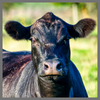
Lactating cows can undergo periods with a negative energy balance due to feed shortages, which trigger metabolic adaptations to support cow maintenance and milk yield. We explored beef cows’ response to a short feed restriction (4 d, 55% of their energy and protein requirements) and subsequent refeeding (4 d, 100% of their energy and protein requirements) in the second month of lactation.
Read more
-

Mar
16
Interpretive Summary: Effects of replacing inorganic salts of trace minerals with organic trace minerals in the pre- and postpartum diets on mineral status, antioxidant biomarkers, and health of dairy cows
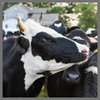
Trace minerals (TM) are important for oxidative balance and immunity of cows. Different forms of TM are available for dietary supplementation of dairy cows. We tested whether replacing inorganic salts of TM by organic sources of TM in both pre- and postpartum diets improve TM concentration in body fluids and liver, antioxidant capacity in blood, and postpartum health of dairy cows.
Read more
-

Mar
16
Interpretive Summary: Development of a dynamic model for prediction of energy in milk protein, lactose, fat, and enteric methane emissions in goats based on energy balance and indirect calorimetry studies

The present model using mixed diets with different by-products to obtain macronutrient balance, methane emission, and milk performance during mid lactation could be an interesting tool to help farmers, without the costs of running animal experiments.
Read more
-

Mar
16
Interpretive Summary: Modeling net energy partition patterns of growing–finishing pigs using nonlinear regression and artificial neural networks
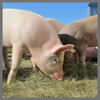
Net energy (NE) is the most refined energy system in animal nutrition, and understanding the NE partition patterns of pigs can help us to develop suitable feeding strategies to improve the growth performance and carcass traits of pigs. However, it is time-consuming, laborious, and expensive to directly measure the NE; thus, establishing a predicted model is more efficient.
Read more
-

Mar
16
Interpretive Summary: Impact of ileal indigestible protein on fecal nitrogen excretion and fecal microbiota may be greater compared with total protein concentration of diets in growing pigs
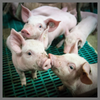
Dietary protein concentration has been gradually reduced because reductions in protein concentration in swine diets are known to be beneficial in terms of feed costs, nitrogen excretion, and intestinal microbiota. However, ileal indigestible protein concentration may be more influential in those variables of pigs compared with total protein concentration in diets because ileal indigestible protein considers both protein concentration and digestibility of diets.
Read more
 MarFSIS extends time-limited trials until November
MarFSIS extends time-limited trials until November The United States Department of Agriculture’s (USDA’s) Food and Safety Inspection Service (FSIS) has extended the trial period for a study on the impact that line speeds have on workers at swine processing facilities, until November 30, 2023.
The United States Department of Agriculture’s (USDA’s) Food and Safety Inspection Service (FSIS) has extended the trial period for a study on the impact that line speeds have on workers at swine processing facilities, until November 30, 2023. MarIndustry groups all to modernize the Federal Milk Marketing Order system
MarIndustry groups all to modernize the Federal Milk Marketing Order system The Board of Directors of the National Milk Producers Federation (NMPF) has endorsed a proposal that will modernize the Federal Milk Marketing Order (FMMO) system. Overseen by the United States Department of Agriculture (USDA), FMMOs establish provisions under which dairy processors buy fresh milk from dairy farmers who supply a marketing area, maintaining stable marketing relationships for all handlers and producers and organizing the complex process of marketing fresh milk.
The Board of Directors of the National Milk Producers Federation (NMPF) has endorsed a proposal that will modernize the Federal Milk Marketing Order (FMMO) system. Overseen by the United States Department of Agriculture (USDA), FMMOs establish provisions under which dairy processors buy fresh milk from dairy farmers who supply a marketing area, maintaining stable marketing relationships for all handlers and producers and organizing the complex process of marketing fresh milk. MarNew “Product of USA” rule put forth by Biden Administration
MarNew “Product of USA” rule put forth by Biden Administration The United States Department of Agriculture (USDA) has proposed new requirements for the voluntary “Product of USA” claim. The proposed rule allows the voluntary “Product of USA” or “Made in the USA” label claim to be used on meat, poultry, and egg products only when they are derived from animals born, raised, slaughtered, and processed in the United States.
The United States Department of Agriculture (USDA) has proposed new requirements for the voluntary “Product of USA” claim. The proposed rule allows the voluntary “Product of USA” or “Made in the USA” label claim to be used on meat, poultry, and egg products only when they are derived from animals born, raised, slaughtered, and processed in the United States. MarThe Beagle Brigade Act of 2023 is introduced
MarThe Beagle Brigade Act of 2023 is introduced Earlier this month, United States Senators Reverend Raphael Warnock (D-GA) and Joni Ernst (R-IA) introduced the Beagle Brigade Act of 2023. The bipartisan bill would provide permanent authorization for the National Detector Dog Training Center, located in Newnan, Georgia.
Earlier this month, United States Senators Reverend Raphael Warnock (D-GA) and Joni Ernst (R-IA) introduced the Beagle Brigade Act of 2023. The bipartisan bill would provide permanent authorization for the National Detector Dog Training Center, located in Newnan, Georgia. MarThe Military Family Nutrition Access Act is introduced
MarThe Military Family Nutrition Access Act is introduced United States Senators Tammy Duckworth (D-IL), and Lisa Murkowski (R-AK) have introduced The Military Family Nutrition Access Act, to support active-duty military families experiencing food insecurity. The bipartisan bill would address food insecurity by excluding Basic Allowance for Housing (BAH), from income calculations used to determine Supplemental Nutrition Assistance Program (SNAP) eligibility.
United States Senators Tammy Duckworth (D-IL), and Lisa Murkowski (R-AK) have introduced The Military Family Nutrition Access Act, to support active-duty military families experiencing food insecurity. The bipartisan bill would address food insecurity by excluding Basic Allowance for Housing (BAH), from income calculations used to determine Supplemental Nutrition Assistance Program (SNAP) eligibility. MarUS requests talks with Mexico over GMO corn
MarUS requests talks with Mexico over GMO corn The Office of the United States Trade Representative (USTR) has announced that it is requesting technical consultations with the Government of Mexico under the Sanitary and Phytosanitary Measures (SPS) Chapter of the United States–Mexico–Canada Agreement (USMCA). The request comes as the United States and Mexico are at battle regarding genetically modified corn.
The Office of the United States Trade Representative (USTR) has announced that it is requesting technical consultations with the Government of Mexico under the Sanitary and Phytosanitary Measures (SPS) Chapter of the United States–Mexico–Canada Agreement (USMCA). The request comes as the United States and Mexico are at battle regarding genetically modified corn. MarUSDA announces over 43 million dollars for meat and poultry research
MarUSDA announces over 43 million dollars for meat and poultry research The United States Department of Agriculture (USDA) has announced over $43 million for meat and poultry processing research, innovation, and expansion. This funding comes as part of the American Rescue Plan and the USDA’s Agriculture and Food Research Initiative (AFRI).
The United States Department of Agriculture (USDA) has announced over $43 million for meat and poultry processing research, innovation, and expansion. This funding comes as part of the American Rescue Plan and the USDA’s Agriculture and Food Research Initiative (AFRI). MarUSDA Secretary Tom Vilsack releases statement on FY2024
MarUSDA Secretary Tom Vilsack releases statement on FY2024 President Joe Biden has released the Fiscal Year 2024 (FY2024) budget. The President’s plan calls for increasing corporate taxes and income taxes on higher-income earners (over $400,000) to shave the growth of the national debt over the next decade.
President Joe Biden has released the Fiscal Year 2024 (FY2024) budget. The President’s plan calls for increasing corporate taxes and income taxes on higher-income earners (over $400,000) to shave the growth of the national debt over the next decade. MarInterpretive Summary: Effects of Aspergillus oryzae prebiotic on animal performance, nutrients digestibility, and feeding behavior of backgrounding beef heifers fed with either a sorghum silage- or a byproducts-based diet
MarInterpretive Summary: Effects of Aspergillus oryzae prebiotic on animal performance, nutrients digestibility, and feeding behavior of backgrounding beef heifers fed with either a sorghum silage- or a byproducts-based diet This experiment evaluated the effects of the dietary inclusion or not of Aspergillus oryzae prebiotic (AOP; 2 g/d) in two contrasting diets: sorghum silage-based (SS) vs. byproducts-based (BP), on growth performance, nutrient digestibility, and feeding behavior of growing heifers.
This experiment evaluated the effects of the dietary inclusion or not of Aspergillus oryzae prebiotic (AOP; 2 g/d) in two contrasting diets: sorghum silage-based (SS) vs. byproducts-based (BP), on growth performance, nutrient digestibility, and feeding behavior of growing heifers. MarInterpretive Summary: Feeding a Saccharomyces cerevisiae fermentation product before and during a feed restriction challenge on milk production, plasma biomarkers, and immune function in Holstein cows
MarInterpretive Summary: Feeding a Saccharomyces cerevisiae fermentation product before and during a feed restriction challenge on milk production, plasma biomarkers, and immune function in Holstein cows Postbiotic fermentation products have the potential to improve health and support anti-inflammatory functions when fed to lactating dairy cows. Since dairy cows experience disruptions of the intestinal barrier function at various stages of their life, for example, the transition into lactation, we sought to investigate potential beneficial effects of feeding a Saccharomyces cerevisiae fermentation (NTK) before and during a period of feed restriction to challenge gut function.
Postbiotic fermentation products have the potential to improve health and support anti-inflammatory functions when fed to lactating dairy cows. Since dairy cows experience disruptions of the intestinal barrier function at various stages of their life, for example, the transition into lactation, we sought to investigate potential beneficial effects of feeding a Saccharomyces cerevisiae fermentation (NTK) before and during a period of feed restriction to challenge gut function. MarInterpretive Summary: Feeding thermally processed spray-dried egg whites, singly or in combination with 15-acetyldeoxynivalenol or peroxidized soybean oil on growth performance, digestibility, intestinal morphology, and oxidative status in nursery pigs
MarInterpretive Summary: Feeding thermally processed spray-dried egg whites, singly or in combination with 15-acetyldeoxynivalenol or peroxidized soybean oil on growth performance, digestibility, intestinal morphology, and oxidative status in nursery pigs Swine can be exposed to a variety of nutritional stressors that can affect their well-being and productivity. Three stressors of concern include grains with naturally occurring mycotoxins, oxidized proteins in feedstuffs due to overheating during processing, or lipids that have been damaged by excessive heating.
Swine can be exposed to a variety of nutritional stressors that can affect their well-being and productivity. Three stressors of concern include grains with naturally occurring mycotoxins, oxidized proteins in feedstuffs due to overheating during processing, or lipids that have been damaged by excessive heating. MarInterpretive Summary: Effects of cottonseed meal on performance, gossypol residue, liver function, lipid metabolism, and cecal microbiota in geese
MarInterpretive Summary: Effects of cottonseed meal on performance, gossypol residue, liver function, lipid metabolism, and cecal microbiota in geese The shortage of feed resources and the rising price have become one of the significant challenges for animal husbandry worldwide. Considering the strong tolerance and adaptability to roughage of geese, less expensive crop byproducts are used in goose feed by animal nutritionists.
The shortage of feed resources and the rising price have become one of the significant challenges for animal husbandry worldwide. Considering the strong tolerance and adaptability to roughage of geese, less expensive crop byproducts are used in goose feed by animal nutritionists. MarInterpretive Summary: Predicting the metabolizable energy and metabolizability of gross energy of conventional feedstuffs for Muscovy duck using in vitro digestion method
MarInterpretive Summary: Predicting the metabolizable energy and metabolizability of gross energy of conventional feedstuffs for Muscovy duck using in vitro digestion method Metabolizable energy (ME) is one of the major factors in formulating diets for ducks and most studies on the ME values of ingredients have been conducted on Peking ducks, with limited research on Muscovy ducks.
Metabolizable energy (ME) is one of the major factors in formulating diets for ducks and most studies on the ME values of ingredients have been conducted on Peking ducks, with limited research on Muscovy ducks. MarInterpretive Summary: The development of a semisynthetic diet deficient in methionine for adult cats for controlled feline nutrition studies: effects on acceptability, preference, and behavior responses
MarInterpretive Summary: The development of a semisynthetic diet deficient in methionine for adult cats for controlled feline nutrition studies: effects on acceptability, preference, and behavior responses Previous studies that determined the requirement of amino acids (AA) in cats utilized experimental diets that do not represent commercial cat diets available in the market. Using this type of diets can present a challenge when applying AA requirements to commercial diet production.
Previous studies that determined the requirement of amino acids (AA) in cats utilized experimental diets that do not represent commercial cat diets available in the market. Using this type of diets can present a challenge when applying AA requirements to commercial diet production. MarInterpretive Summary: Effects of a Saccharomyces cerevisiae fermentation product-supplemented diet on fecal characteristics, oxidative stress, and blood gene expression of adult dogs undergoing transport stress
MarInterpretive Summary: Effects of a Saccharomyces cerevisiae fermentation product-supplemented diet on fecal characteristics, oxidative stress, and blood gene expression of adult dogs undergoing transport stress Saccharomyces cerevisiae fermentation product (SCFP) is a yeast product containing bioactive fermentation metabolites, residual yeast cells, and yeast cell wall fragments. In this study, SCFP was investigated for its impacts on fecal characteristics and oxidative stress of dogs undergoing transport stress.
Saccharomyces cerevisiae fermentation product (SCFP) is a yeast product containing bioactive fermentation metabolites, residual yeast cells, and yeast cell wall fragments. In this study, SCFP was investigated for its impacts on fecal characteristics and oxidative stress of dogs undergoing transport stress. MarInterpretive Summary: Performance and milk fatty acid profile of beef cows with a different energy status with short nutrient restriction and refeeding
MarInterpretive Summary: Performance and milk fatty acid profile of beef cows with a different energy status with short nutrient restriction and refeeding Lactating cows can undergo periods with a negative energy balance due to feed shortages, which trigger metabolic adaptations to support cow maintenance and milk yield. We explored beef cows’ response to a short feed restriction (4 d, 55% of their energy and protein requirements) and subsequent refeeding (4 d, 100% of their energy and protein requirements) in the second month of lactation.
Lactating cows can undergo periods with a negative energy balance due to feed shortages, which trigger metabolic adaptations to support cow maintenance and milk yield. We explored beef cows’ response to a short feed restriction (4 d, 55% of their energy and protein requirements) and subsequent refeeding (4 d, 100% of their energy and protein requirements) in the second month of lactation. MarInterpretive Summary: Effects of replacing inorganic salts of trace minerals with organic trace minerals in the pre- and postpartum diets on mineral status, antioxidant biomarkers, and health of dairy cows
MarInterpretive Summary: Effects of replacing inorganic salts of trace minerals with organic trace minerals in the pre- and postpartum diets on mineral status, antioxidant biomarkers, and health of dairy cows Trace minerals (TM) are important for oxidative balance and immunity of cows. Different forms of TM are available for dietary supplementation of dairy cows. We tested whether replacing inorganic salts of TM by organic sources of TM in both pre- and postpartum diets improve TM concentration in body fluids and liver, antioxidant capacity in blood, and postpartum health of dairy cows.
Trace minerals (TM) are important for oxidative balance and immunity of cows. Different forms of TM are available for dietary supplementation of dairy cows. We tested whether replacing inorganic salts of TM by organic sources of TM in both pre- and postpartum diets improve TM concentration in body fluids and liver, antioxidant capacity in blood, and postpartum health of dairy cows. MarInterpretive Summary: Development of a dynamic model for prediction of energy in milk protein, lactose, fat, and enteric methane emissions in goats based on energy balance and indirect calorimetry studies
MarInterpretive Summary: Development of a dynamic model for prediction of energy in milk protein, lactose, fat, and enteric methane emissions in goats based on energy balance and indirect calorimetry studies The present model using mixed diets with different by-products to obtain macronutrient balance, methane emission, and milk performance during mid lactation could be an interesting tool to help farmers, without the costs of running animal experiments.
The present model using mixed diets with different by-products to obtain macronutrient balance, methane emission, and milk performance during mid lactation could be an interesting tool to help farmers, without the costs of running animal experiments. MarInterpretive Summary: Modeling net energy partition patterns of growing–finishing pigs using nonlinear regression and artificial neural networks
MarInterpretive Summary: Modeling net energy partition patterns of growing–finishing pigs using nonlinear regression and artificial neural networks Net energy (NE) is the most refined energy system in animal nutrition, and understanding the NE partition patterns of pigs can help us to develop suitable feeding strategies to improve the growth performance and carcass traits of pigs. However, it is time-consuming, laborious, and expensive to directly measure the NE; thus, establishing a predicted model is more efficient.
Net energy (NE) is the most refined energy system in animal nutrition, and understanding the NE partition patterns of pigs can help us to develop suitable feeding strategies to improve the growth performance and carcass traits of pigs. However, it is time-consuming, laborious, and expensive to directly measure the NE; thus, establishing a predicted model is more efficient. MarInterpretive Summary: Impact of ileal indigestible protein on fecal nitrogen excretion and fecal microbiota may be greater compared with total protein concentration of diets in growing pigs
MarInterpretive Summary: Impact of ileal indigestible protein on fecal nitrogen excretion and fecal microbiota may be greater compared with total protein concentration of diets in growing pigs Dietary protein concentration has been gradually reduced because reductions in protein concentration in swine diets are known to be beneficial in terms of feed costs, nitrogen excretion, and intestinal microbiota. However, ileal indigestible protein concentration may be more influential in those variables of pigs compared with total protein concentration in diets because ileal indigestible protein considers both protein concentration and digestibility of diets.
Dietary protein concentration has been gradually reduced because reductions in protein concentration in swine diets are known to be beneficial in terms of feed costs, nitrogen excretion, and intestinal microbiota. However, ileal indigestible protein concentration may be more influential in those variables of pigs compared with total protein concentration in diets because ileal indigestible protein considers both protein concentration and digestibility of diets.



